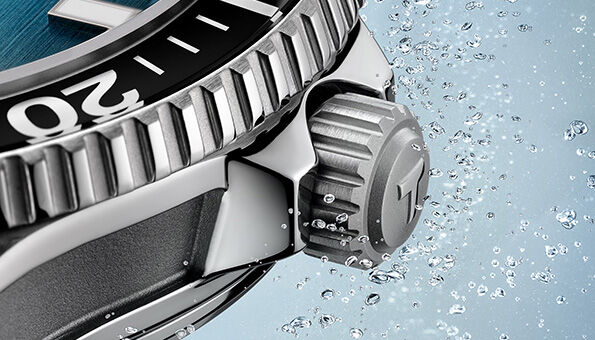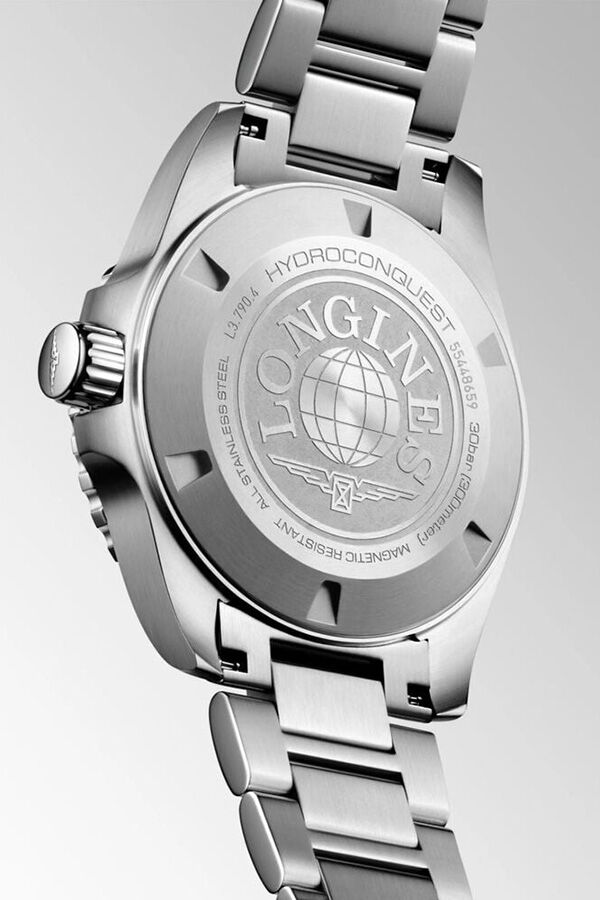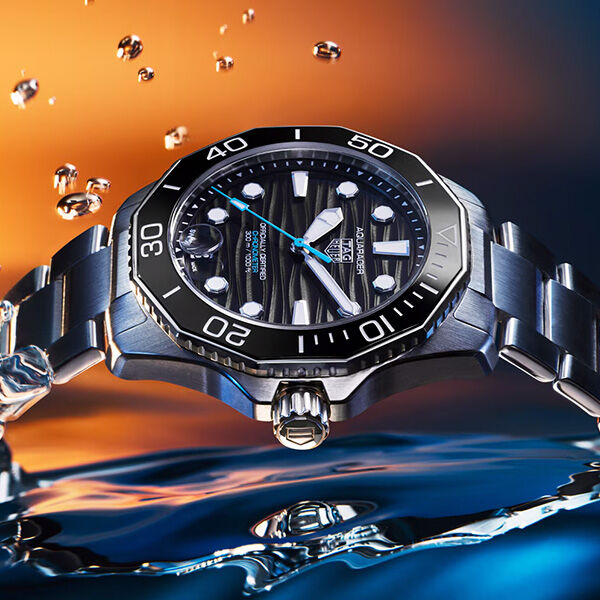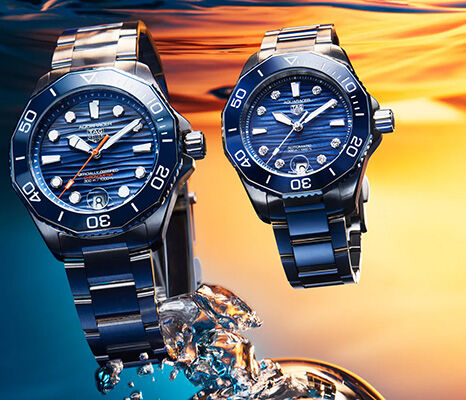Watch Water Resistance Explained
When choosing a watch, understanding water resistance is crucial for both its longevity and your peace of mind. Whether you're swimming, diving, or simply caught in the rain, knowing how your watch can handle water exposure is essential.
This guide will walk you through the key aspects of water resistance, including ratings, factors affecting it, testing methods, and real-life applications, ensuring you can confidently select and care for your timepiece.
Let's dive in!
Water Resistance vs. Waterproof
No watch is truly waterproof. "Waterproof" suggests that no moisture can ever penetrate the watch, which isn't realistic. Under extreme conditions, any watch can leak. "Water resistance" is the accurate term, referring to a watch’s ability to withstand splashes and some pressure.
Key Elements of Water Resistance in Watches
Water resistance in watches depends on three key elements: the case back, the crown, and the gaskets. Here's a straightforward breakdown:
Case Back:
This refers to the method used to attach the case back to the watch.
1. Snap-On Case Backs: These are sealed by pressure and offer the least water resistance. Any small nick or gasket deformity can let water in. Typically, these watches have a water resistance of up to 30m/99ft, which means they can handle contact with water but not immersion.
2. Screw-On Case Backs: These offer a tighter seal than snap-on backs. However, a gasket deformity can still allow water to penetrate. These watches generally have a water resistance of up to 100m/330ft, suitable for light swimming and pool immersion.
3. Screw-In Case Backs: These are threaded and screw into the case, creating a double seal with the threading and the gasket. Diving watches with ratings greater than 100m/330ft typically have this type of case back.
Crown:
The crown is crucial for water resistance. The crown-stem hole is a vulnerable point where water can enter. The gasket here is constantly stressed by the crown's movement.
Screw-Down Crowns are threaded, and screw shut to a matching tube in the case, compressing a gasket to seal the opening. Essential for swimming, they provide extra protection against water entry. Never push, adjust, or open the crown or pushers when the watch is submerged unless specified by the manufacturer.
Gaskets:
Gaskets, also known as "O" rings, are made from rubber, nylon, or Teflon. They form watertight seals at joints where the crystal, case back, and crown meet the watch case. Chronograph pushers also have gaskets.
Gaskets degrade over time, reducing water resistance. It's important to have your watch tested annually by a competent watchmaker. The cost is usually minimal.
Water Resistance Ratings
A watch's depth rating does not mean it can be immersed to that exact depth in real-world conditions. These ratings are based on ideal laboratory conditions that cannot be replicated in everyday life.
Factors such as temperature changes, pressure fluctuations, and the natural aging of seals and gaskets all affect a watch's actual water resistance. Therefore, it's crucial to understand that the manufacturer's depth rating is theoretical and should not be taken literally for practical use.
To achieve water resistance ratings, manufacturers use two primary testing methods: dry testing and wet testing. Here's how each method works:
Dry Test:
• The watch is placed in a chamber where the air pressure is increased.
• The machine detects any slight variation in the case size.
• If the case expands, even slightly, it indicates that the watch is not water-resistant.
Wet Test:
• The watch is placed in a chamber that is half-filled with water and half with air.
• Air pressure is increased while the watch is out of the water.
• The watch is then slowly immersed in the water.
• Once fully immersed, the air pressure is gradually released.
• If bubbles emerge from the watch, it means air seeped into the watch before immersion, indicating it is not water-resistant.
• This method is typically used as a follow-up test to identify the problem area.
These testing methods help ensure your watch can withstand exposure to water, giving you peace of mind in various conditions. Regular testing and maintenance are essential to keep your watch in optimal condition.
Dive Watches
As their name suggests, dive watches are specifically designed and engineered for heavy water usage and can withstand depths of at least 200 metres. Unlike non-dive watches, they have minimal openings for water to permeate, featuring a sturdier case, screw-down crown, and heavier gaskets for additional protection. For those who spend a lot of time in or on the water, dive watches are essential.
To be considered an official dive watch, it must comply with ISO 6425 standards. This involves numerous tests, including measuring the watch's:
• Resistance to Salt Water
• Reliability Under Water
• Reaction to Condensation
• Reaction to Extreme Water Temperature Changes.
Dive watches are built to ensure durability and functionality in challenging underwater conditions, making them a reliable choice for serious water enthusiasts.
Real-Life Applications and Water Resistance
Manufacturers test watches under optimal conditions in labs, but real-life use presents different challenges:
• Temperature Changes: High temperatures can alter the shape of gasket seals. Moving from hot environments, like a hot tub, to cold water, such as a pool, can stress the gaskets and compromise water resistance.
• Pressure Changes: Sudden pressure changes, such as diving into a pool or forcefully plunging your arm into the water, can stress the gaskets. If the gaskets aren't in perfect condition, they might rupture and allow water to enter.
• Ageing: Over time, the seals and gaskets in a watch degrade, reducing its water resistance. Regular maintenance is essential to ensure ongoing water resistance.
• Movement and Impact: Regular activities, including winding the crown and adjusting the time, can stress the gaskets. Any deformity or improper sealing can allow water to penetrate.
To maintain your watch’s water resistance:
• Avoid exposing your watch to extreme temperatures.
• Be cautious of sudden pressure changes.
• Have your watch tested annually by a professional to ensure the gaskets and seals are intact.
• Always make sure the crown is fully secured before exposing the watch to water.
Understanding water resistance is crucial for maintaining your watch's longevity and performance, especially if you enjoy water-based activities. Regular testing and maintenance, coupled with mindful use, will ensure your watch remains in top condition.
Ready to explore the perfect watch for your needs?
Visit our store to discover our exceptional range of dive watches, each crafted to meet the highest standards of water resistance and reliability.
Dive into our collection and find the watch that will accompany you on all your underwater adventures!





